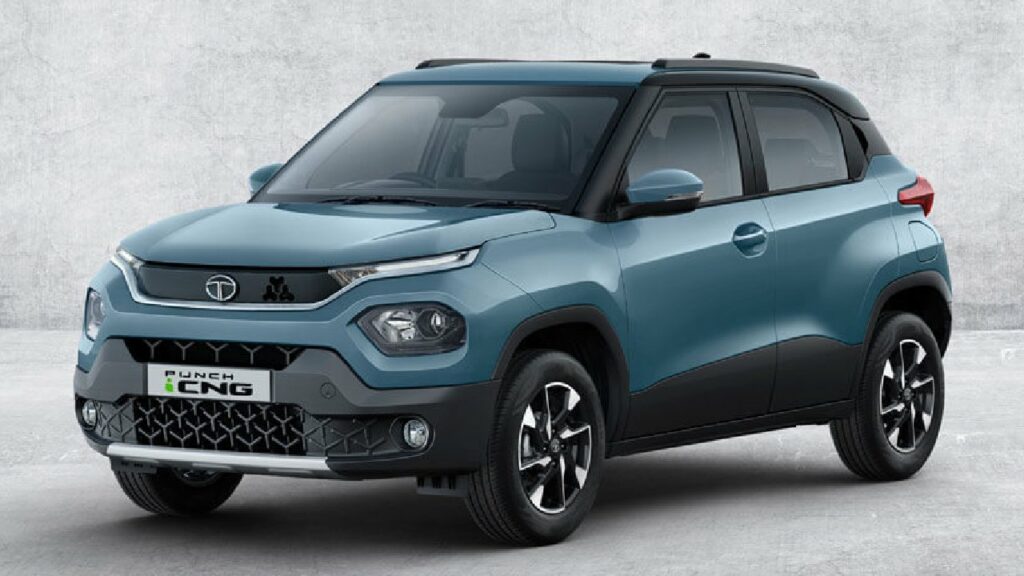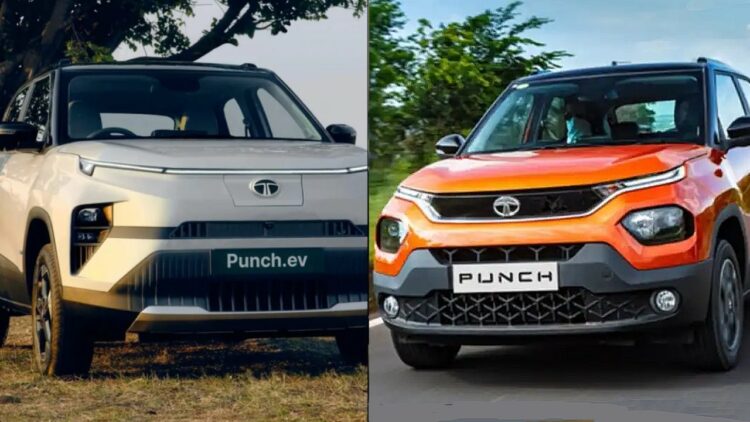In this post, we shall have a detailed comparison of the new Tata Punch EV with its petrol counterpart. Note that Tata Motors converts its existing ICE cars into EVs. We have seen this in the Nexon EV, Tiago EV and Tigor EV. Essentially, the popularity of ICE models gets translated to EVs as well. Following the same approach, it now offers the electric version of the Punch. But the main difference in comparison to other products is that the Punch EV uses a dedicated acti.ev platform. It doesn’t use the platform from its ICE sibling which is the case with other Tata EVs. That offers tons of benefits. Let us take a look at the specs, prices and features of both these micro SUVs here.
You may also like: Tata Punch EV vs Citroen eC3 – What to Buy?
Tata Punch EV vs Petrol Comparison – Price
The biggest deciding factor for most car buyers will be the retail price of the two. The Punch EV ranges from Rs 10.99 lakh to Rs 14.49 lakh, ex-showroom. But the catch is that if you wish to opt for the sunroof trim or a 7 kW AC fast charger, you will need to shell out Rs 1 lakh (Rs 50,000 + Rs 50,000) more. Hence, the fully-loaded top trim will cost Rs 15.49 lakh, ex-showroom. On the other hand, the ICE Punch retails between Rs 6 lakh and Rs 10.10 lakh, ex-showroom. Clearly, the difference between the two is significant.
| Price | Punch.ev | Punch.ev Long Range |
| Smart | Rs 10.99 lakh | – |
| Smart+ | Rs 11.49 lakh | – |
| Adventure | Rs 11.99 lakh | Rs 12.99 lakh |
| Empowered | Rs 12.79 lakh | Rs 13.99 lakh |
| Empowered+ | Rs 13.29 lakh | Rs 14.49 lakh |
| Price | Punch (P) | Punch (CNG) |
| Base Model | Rs 6 lakh | Rs 7.10 lakh |
| Top Model | Rs 10.10 lakh | Rs 9.68 lakh |
You may also like: 5 Pros and 4 Cons of Tata Punch EV
Tata Punch EV vs Petrol Comparison – Specs
Tata Punch EV
The Punch EV has transitioned to a dedicated pure EV architecture, providing potential buyers with a choice between two battery pack options – a 25 kWh and a 35 kWh. The smaller battery pack offers a range of 315 km (MIDC), while the larger one extends the range to an impressive 421 km on a single charge. These batteries come with two e-Drive options – a 60 kW (80 hp) PMSM AC with 114 Nm and a 90 kW (120 hp) PMSM AC with peak power and torque of 190 Nm, resulting in a 0-100 km/h acceleration time of 9.5 seconds and a top speed of 140 km/h.
Both the battery pack and electric motor boast an IP67 rating, ensuring resistance to water and dust. To provide additional confidence, there is an 8-year or 1,60,000 km warranty. In the Long Range (LP) version, buyers can opt for either a 3.3 kW or a 7.2 kW AC fast charger, as well as a 50 kW DC fast charger. With the latter, the EV can be charged from 10% to 80% in just 56 minutes.
| Specs | Tata Punch EV |
| Battery | 25 kWh & 35 kWh |
| Power | 82 PS / 122 PS |
| Torque | 114 Nm / 190 Nm |
| Range | 315 km / 421 km |
| Acc (0-100 km/h) | 9.5 seconds |
| DC Fast Charging (50 kW) | 56 mins for 10-80% |
You may also like: Tata Punch EV vs Tata Tiago EV – Which One to Buy?
Tata Punch
On the other hand, the Tata Punch offers a choice between two engine options – the 1.2-litre Revotron petrol engine and the 1.2-litre Bi-Fuel Revotron CNG. The former generates 86.5 hp and 115 Nm, whereas the latter delivers 72.4 hp and 103 Nm of peak power and torque. The buyers can choose between either a 5-speed manual or an AMT gearbox. Essentially, the buyers can opt for the regular petrol trim or the CNG for low running costs.
| Specs | Tata Punch |
| Engine | 1.2L (P) / 1.2L (CNG) |
| Power | 88 PS / 74 PS |
| Torque | 115 Nm / 103 Nm |
| Transmission | 5MT / AMT |
| Mileage | 20.09 kmpl / 26.99 km/kg |
You may also like: Tata Punch EV vs Nexon EV Comparison – Which One to Buy?

Features Comparison
Tata Punch EV
Tata Punch EV comes with tons of modern equipment and features. The top highlights include dual 10.2-inch screens – one dedicated to the HD Infotainment powered by HARMAN and a Digital Cockpit instrument cluster. The steering wheel, featuring an illuminated Tata logo, is a two-spoke design, complemented by phygital controls. Additional features include smartphone connectivity, Google Assistant (for Android users), Connected Car Tech, and over 200 voice commands in 6 languages for Alexa, Siri, and more. The vehicle also boasts wireless charging, an auto-dimming IRVM, a Type-C USB port, an electric sunroof, ventilated leatherette seats, an air purifier, paddle shifters for 4-step regenerative braking, Over-The-Air updates, 6 airbags, brake disc wiping, a 360-surround view monitor, 90-degree opening doors, 366 litres of boot space, and more.
You may also like: Hyundai Creta-Rivalling Tata CURVV Spotted Testing on Highway
Tata Punch
Since the electric version is based on the Punch, the donor model it shares a lot of these features and interior layout. The most prominent functions encompass premium upholstery with Tri-Arrow design, body-coloured AC vents, D-cut steering wheel, iTPMS, rear defogger, cruise control, traction pro mode, idle stop-start function, eco & city drive modes, a floating 7-inch infotainment display from Harman, Apple CarPlay and Android Auto, audio system with 4 speakers and 2 tweeters, What3Words navigation, a 7-inch TFT instrument cluster, iRA connected car tech, voice-assisted sunroof, height adjustable driver seat, automatic climate control with Xpress Cool function, leather steering wheel and gear knob, auto-fold ORVM, rear wiper and washer, cooled glove box, steering mounted controls, Follow Me Home headlamps, and more.
You may also like: Tata Motors Against Lower GST for Hybrid Cars

You may also like: 5 Reasons Why I Feel Everyone is Buying a Tata Nexon
Author’s Note
Choosing between these two solely depends on your budget and application. Going for an EV as your sole car is not really feasible despite the massive growth in this space. The initial price, range anxiety, and charging infrastructure are all huge obstacles. Still, if you want to switch to an EV, it could serve as a great option. On the other hand, for people who just want to enjoy the road presence and compactness of the micro SUV, opting for the ICE version is prudent.


